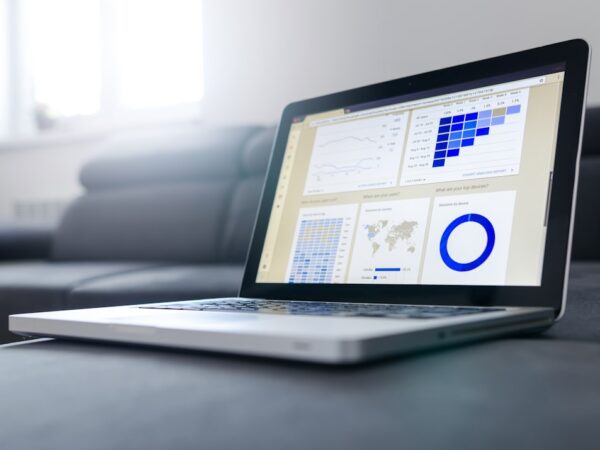
Understanding the Difference: Microeconomics vs Macroeconomics Explained
Microeconomics and macroeconomics are two branches of economics that study different aspects of the economy. Microeconomics focuses on individual decision-making and the behavior of small economic units such as households and firms. On the other hand, macroeconomics looks at the overall performance of the economy as a whole, including factors such as inflation, unemployment, and economic growth.
Understanding the difference between microeconomics and macroeconomics is important because it helps us analyze and make informed decisions about various economic issues. For example, if you are a business owner, understanding microeconomic principles can help you determine the optimal pricing strategy for your products. On the other hand, if you are a government policymaker, understanding macroeconomic principles can help you design effective policies to address issues such as unemployment or inflation.
Key Takeaways
- Microeconomics focuses on individual decision-making while macroeconomics studies aggregate economic activity.
- Markets play a crucial role in microeconomics by determining prices and allocating resources.
- In macroeconomics, the government plays a significant role in managing the economy through fiscal and monetary policies.
- Supply and demand are key concepts in microeconomics, while gross domestic product (GDP) is a crucial concept in macroeconomics.
- Microeconomics is applied to consumer behavior and firm strategy, while macroeconomics is applied to fiscal and monetary policy. Understanding the difference between the two is essential for making informed economic decisions.
The Scope of Microeconomics: Individual Decision-Making
Microeconomics focuses on individual decision-making and how these decisions affect the allocation of resources in the economy. It examines how individuals make choices based on their preferences and constraints. Microeconomic principles include concepts such as supply and demand, elasticity, consumer behavior, and production theory.
For example, microeconomics can help us understand why people buy certain goods or services. It examines factors such as price, income, and tastes to explain consumer behavior. Microeconomic principles also help firms make decisions about production and pricing. For instance, a firm may use microeconomic analysis to determine the optimal level of production that maximizes profits.
The Scope of Macroeconomics: Aggregate Economic Activity
Macroeconomics looks at the overall performance of the economy as a whole. It focuses on aggregate economic activity, such as total output (Gross Domestic Product or GDP), inflation, unemployment, and economic growth. Macroeconomic principles include concepts such as fiscal policy, monetary policy, and international trade.
Macroeconomics helps us understand the factors that determine the overall level of economic activity in a country. For example, it examines how changes in government spending or taxation can affect economic growth and employment. Macroeconomics also looks at the role of the central bank in controlling inflation and managing the money supply.
The Role of Markets in Microeconomics
| Metrics | Description |
|---|---|
| Supply and Demand | The interaction between buyers and sellers that determines the price and quantity of a good or service. |
| Market Equilibrium | The point where the quantity demanded equals the quantity supplied, resulting in a stable price. |
| Market Failure | When the market fails to allocate resources efficiently, resulting in a misallocation of resources. |
| Externalities | The costs or benefits that affect parties who did not choose to incur them, such as pollution or public goods. |
| Monopoly | A market structure where a single firm dominates the market, resulting in higher prices and lower output. |
| Oligopoly | A market structure where a few firms dominate the market, resulting in limited competition and higher prices. |
| Perfect Competition | A market structure where many firms compete with each other, resulting in low prices and high output. |
In microeconomics, markets play a crucial role in allocating resources and determining prices. A market is a place where buyers and sellers come together to exchange goods and services. In a competitive market, prices are determined by the forces of supply and demand.
Supply refers to the quantity of a good or service that producers are willing and able to sell at a given price. Demand, on the other hand, refers to the quantity of a good or service that consumers are willing and able to buy at a given price. The interaction between supply and demand determines the equilibrium price and quantity in a market.
For example, if there is an increase in demand for a particular product, the price will tend to rise as consumers compete for limited supply. On the other hand, if there is a decrease in demand, the price will tend to fall as producers try to sell their excess inventory.
The Role of Government in Macroeconomics
In macroeconomics, the government plays a significant role in managing the overall performance of the economy. The government’s role includes implementing policies to stabilize the economy, promote economic growth, and address issues such as unemployment and inflation.
For example, during an economic downturn, the government may implement expansionary fiscal policy by increasing government spending or cutting taxes to stimulate aggregate demand and boost economic activity. On the other hand, during periods of high inflation, the government may implement contractionary monetary policy by raising interest rates or reducing the money supply to reduce inflationary pressures.
Key Concepts in Microeconomics: Supply and Demand
Supply and demand are key concepts in microeconomics that help us understand how prices are determined in a market. Supply refers to the quantity of a good or service that producers are willing and able to sell at a given price. Demand, on the other hand, refers to the quantity of a good or service that consumers are willing and able to buy at a given price.
The interaction between supply and demand determines the equilibrium price and quantity in a market. If the quantity demanded exceeds the quantity supplied, there is a shortage, and prices tend to rise. On the other hand, if the quantity supplied exceeds the quantity demanded, there is a surplus, and prices tend to fall.
Key Concepts in Macroeconomics: Gross Domestic Product (GDP)
Gross Domestic Product (GDP) is a key concept in macroeconomics that measures the total value of all final goods and services produced within a country’s borders in a given period. It is used as an indicator of economic activity and is often used to compare the economic performance of different countries.
GDP can be calculated using either the expenditure approach or the income approach. The expenditure approach adds up all the spending on final goods and services by households, businesses, government, and net exports (exports minus imports). The income approach adds up all the incomes earned by individuals and businesses in the production process.
GDP is an important measure because it provides insights into the overall health of an economy. For example, if GDP is growing at a high rate, it indicates that the economy is expanding. On the other hand, if GDP is declining or growing at a slow rate, it suggests that the economy may be in a recession or experiencing sluggish growth.
Microeconomic Applications: Consumer Behavior and Firm Strategy
Microeconomic principles have various applications in understanding consumer behavior and firm strategy. Consumer behavior refers to how individuals make choices about what goods or services to buy based on their preferences and constraints.
Microeconomics helps us understand why people buy certain goods or services. For example, it examines factors such as price, income, and tastes to explain consumer behavior. Microeconomic principles also help firms make decisions about production and pricing. For instance, a firm may use microeconomic analysis to determine the optimal level of production that maximizes profits.
Macroeconomic Applications: Fiscal and Monetary Policy
Macroeconomics has various applications in the formulation and implementation of fiscal and monetary policy. Fiscal policy refers to the use of government spending and taxation to influence the overall level of economic activity. Monetary policy, on the other hand, refers to the use of interest rates and the money supply to control inflation and stabilize the economy.
For example, during an economic downturn, the government may implement expansionary fiscal policy by increasing government spending or cutting taxes to stimulate aggregate demand and boost economic activity. On the other hand, during periods of high inflation, the government may implement contractionary monetary policy by raising interest rates or reducing the money supply to reduce inflationary pressures.
Why Understanding the Difference Matters
In conclusion, understanding the difference between microeconomics and macroeconomics is crucial for making informed decisions about various economic issues. Microeconomics focuses on individual decision-making and helps us understand how individuals and firms make choices based on their preferences and constraints. On the other hand, macroeconomics looks at the overall performance of the economy as a whole and helps us understand factors such as inflation, unemployment, and economic growth.
Understanding microeconomic principles can help individuals make better decisions about consumption and savings. It can also help firms make better decisions about production and pricing. On the other hand, understanding macroeconomic principles can help policymakers design effective policies to address issues such as unemployment or inflation.
Overall, having a solid understanding of both microeconomics and macroeconomics is essential for personal and professional decision-making in today’s complex economic environment. It allows us to analyze economic issues from different perspectives and make informed choices that can have a significant impact on our lives and the economy as a whole.
If you’re interested in exploring the fascinating world of microeconomics vs macroeconomics, you might find this article from Wave Magnets intriguing. Titled “Understanding the Interplay between Micro and Macro Economics,” it delves into the relationship between these two branches of economics and how they influence each other. This insightful piece provides valuable insights into the key differences and connections between microeconomics and macroeconomics. To read more about it, visit Wave Magnets.
FAQs
What is microeconomics?
Microeconomics is the study of individual economic behavior, decision-making, and interactions within a market. It focuses on the behavior of individuals and firms in making decisions regarding the allocation of limited resources.
What is macroeconomics?
Macroeconomics is the study of the economy as a whole, including issues such as inflation, unemployment, economic growth, and monetary and fiscal policies. It focuses on the performance and behavior of the entire economy rather than individual markets.
What are the differences between microeconomics and macroeconomics?
Microeconomics focuses on the behavior of individuals and firms in making decisions regarding the allocation of limited resources, while macroeconomics focuses on the performance and behavior of the entire economy. Microeconomics deals with issues such as supply and demand, market equilibrium, and consumer behavior, while macroeconomics deals with issues such as inflation, unemployment, and economic growth.
Why is it important to study microeconomics and macroeconomics?
Studying microeconomics and macroeconomics is important because it helps us understand how individuals, firms, and governments make decisions regarding the allocation of resources and how these decisions affect the economy as a whole. It also helps us understand the causes and consequences of economic issues such as inflation, unemployment, and economic growth.
What are some examples of microeconomic issues?
Some examples of microeconomic issues include the pricing and production decisions of individual firms, the behavior of consumers in response to changes in prices, and the effects of government policies on individual markets.
What are some examples of macroeconomic issues?
Some examples of macroeconomic issues include inflation, unemployment, economic growth, and the effects of monetary and fiscal policies on the economy as a whole.


















